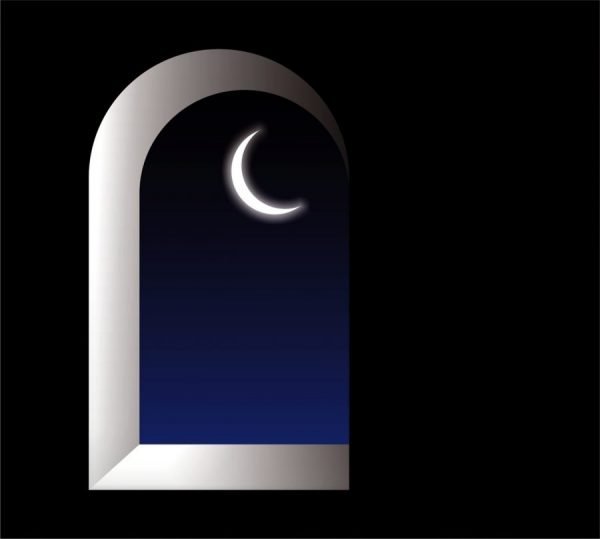April is a wonderful time for family stargazing. The weather is generally good, the nights are long and dark and there is so much to see. In April 2020 we also have got plenty of time on our hands! So why not give stargazing a go?
You can observe the night sky from your garden or make a trip to a nearby football field, park, or any other place free from obstructions (trees, buildings etc) and bright lights. If going out, please remember to comply with social distancing rules: only go with the members of your own household and stay a safe distance away from other people!
The best thing about stargazing is that it does not require any special equipment, although if you own a pair of binoculars or a telescope, bring them along! A blanket to sit on or some garden chairs (recliners are best) would be nice, and flask of hot chocolate will be greatly appreciated. You can print out the sky map to get an idea what constellations you can spot. Alternatively, a stargazing app will help you identify celestial objects and star patterns. Here is our guide of the best Open source planetarium software and free night sky apps for stargazers.
What are you waiting for? Step outside and look out for…
The Moon
Looking at the Moon never gets boring. As the Moon travels around the Earth, we get to see different portions of the Moon illuminated by the Sun. To find out what Moon phase is visible on a particular day (as well as where and when to look to see it), you can make this great DIY Moon Phases Calendar and Calculator by NASA.
Please note: the time on the Calendar wheel is Pacific Standard Time. The UK is 8 hours ahead!
Here are the important dates for your lunar diary:
- 1 April – First quarter Moon
- 8 April – Full Moon. The April 2020 Full Moon will be a Supermoon, because it will occur around the time when the Moon is closest to the Earth on its orbit, therefore our natural satellite will appear bigger and brighter than usual. The April Full Moon is sometimes called “Pink Moon”, thanks to the pink flowers of the creeping phlox, aka “moss pink”, a perennial plant that blooms in the early Spring.
- 14 April – Last Quarter Moon
- 23 April – New Moon
- 30 April – First Quarter Moon, the second First Quarter Moon of April 2020
Venus
See that bright “star” in the southwestern evening sky? That’s Venus. This time of year Venus is the only planet visible as “the evening star”, so it is impossible to miss. On April 27-28 Venus will reach its “greatest illuminated extent” and will look brighter than on any other day this year. Interestingly, the greatest illuminated extent does not coincide with Full Venus (Venus goes through phases, just like the Moon and Mercury). If you look at Venus through a telescope on the 28th, you will notice that it is slightly bigger than Quarter Venus. Full Venus always happens when the planet is on the opposite side from the Sun than the Earth. At that time the disk of Venus appears quite small!
Morning planets
In April 2020 planets Jupiter, Saturn and Mars will appear as morning stars in the southeastern sky. Can you tell which one is which? They are different colours, so it’s not that difficult: Jupiter is white , Saturn is yellowish and Mars is, of course, red. What a lovely celestial display!
Meteor Shower
We had a long meteor shower-free period, so the April Lyrids will get a warm welcome from the stargazers all over the World. Lyrids are a medium strength shower, but with some patience and luck you will see quite a few shooting stars and maybe even some fireballs! The shower will be active from April 16 to 25th and peak in the early morning of April 22nd. The maximum of the Lyrid meteor shower will happen just before the New Moon- nearly perfect conditions to observe the meteors! We can expect the rates of 10-15 shooting stars per hour.
For more information about the Lyrid meteor shower and its origin go to https://wonderdome.co.uk/april-lyrid-meteor-shower/.
Satellites
If you get bored of natural cosmic wonders, why not try satellite watching. There is an ever increasing number of artificial satellites in the low Earth orbit visible with the naked eye. Because they move fast across the sky, they are fun and relatively easy to find.
-
ISS
Thanks to the huge solar panels, the International Space Station is the brightest satellite in the sky. You can find out when the ISS is going to pass overhead in your location on NASA Spot the Station Website. Look for high passes, 45 degrees and over.
-
Starlink
The SpaceX Starlink constellation have got a lot of stargazing attention in the past weeks. There are currently 360 satellites in the constellations with plans to launch thousands more in the near future. Astronomers are worried that Starlink satellites will interfere with astronomical observations and be a nuisance for stargazers. You can read more about the problem in our blog Will the light pollution from satellite constellations ruin the the dark sky? To check when Stalink satellites will be visible in your location, go to https://findstarlink.com/.
Happy April 2020 stargazing!

